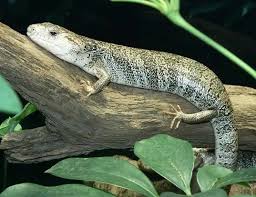PINK TONGUE SKINK (Hemisphaeriodon gerrardii)
Full Description
Here’s a comprehensive care guide for the Pink Tongue Skink (Cyclodomorphus gerrardii), a fascinating and often overlooked species of skink known for its pink tongue and docile temperament.
Pink Tongue Skink Care Guide
Quick Facts:
-
Scientific Name: Cyclodomorphus gerrardii
-
Lifespan: 15–20 years
-
Adult Size: 15–20 inches
-
Temperament: Generally docile and curious
-
Native Range: Eastern Australia
Enclosure
Size:
-
Minimum: 36″ x 18″ x 18″ (40-gallon tank)
-
Ideal: 4’x2’x2′ for adults
Substrate:
-
Coconut fiber, cypress mulch, or bioactive mix for humidity retention
-
Avoid sand or loose particulates that can cause impaction
Enclosure Type:
-
Horizontal space is more important than height
-
Secure lid (they’re good climbers)
️ Temperature & Humidity
Basking Spot:
-
Temperature: 90–95°F (32–35°C)
-
Use a basking lamp on a timer for 10–12 hours/day
Cool Side:
-
Temperature: 75–80°F (24–27°C)
Night Temp:
-
70–75°F (21–24°C)
Humidity:
-
Ideal Range: 60–80%
-
Mist daily or use a humid hide
-
Monitor with a hygrometer
Lighting
-
UVB Lighting: Recommended but not absolutely necessary
-
Use a 5.0 UVB bulb or equivalent
-
-
Helps with calcium absorption and overall health
️ Diet
Pink tongue skinks are omnivores. Offer a varied diet including:
Protein:
-
Insects (crickets, roaches, mealworms)
-
Cooked lean meats
-
High-quality canned dog or cat food (sparingly)
-
Eggs (scrambled or hard-boiled)
Plant Matter:
-
Leafy greens (collards, mustard, dandelion)
-
Squash, carrots
-
Fruits like berries, mango, banana (in moderation)
Supplements:
-
Calcium with D3: 2–3x per week
-
Multivitamin: 1x per week
Enclosure Maintenance
-
Spot clean daily
-
Full substrate change every 4–6 weeks
-
Disinfect enclosure with reptile-safe cleaner
Handling & Temperament
-
Naturally calm but shy
-
Handle gently and support their body
-
Start with short sessions to build trust
Health & Shedding
Common Issues:
-
Respiratory infections (linked to poor humidity)
-
Mouth rot
-
Mites
-
Shedding problems
Provide a moist hide and maintain humidity to aid shedding. Always consult a reptile vet if health concerns arise.
Breeding
-
Live-bearers, unlike blue tongues (which lay eggs)
-
Gestation: ~100 days
-
Litter size: 5–15 babies
-
Best left to experienced keepers due to space and care needs
✅ Supplies Checklist
-
Proper-sized enclosure with secure lid
-
Heat lamp & thermostat
-
UVB light (optional but ideal)
-
Hygrometer & thermometer
-
Hides (cool and warm side)
-
Moist hide
-
Water dish
-
Climbing branches, décor
-
Insect tongs, food/water dishes
-
Calcium & vitamin supplements

